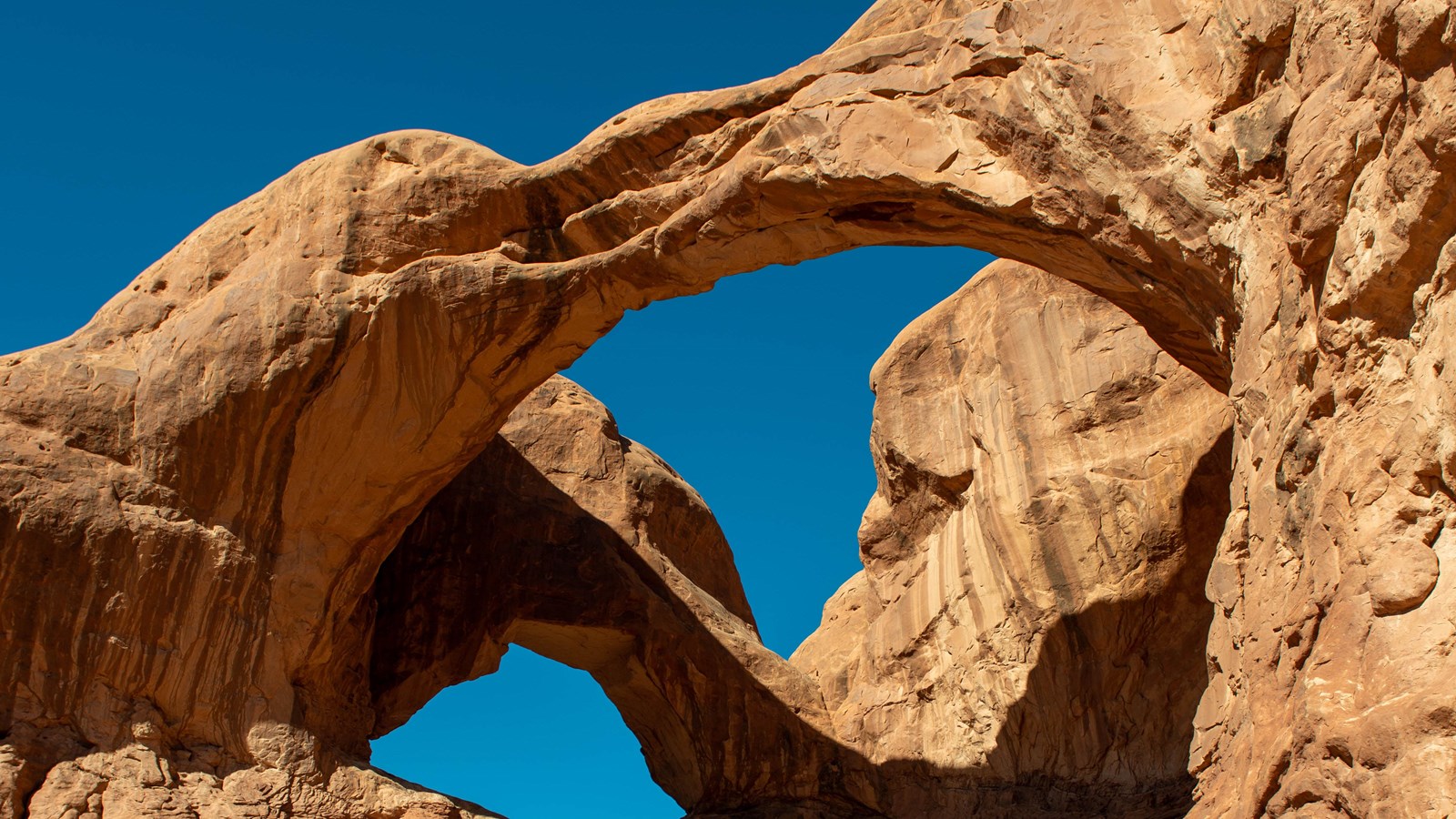In a dramatic and poignant reminder of the vulnerability of Earth’s natural wonders, the iconic Double Arch in southern Utah collapsed on August 8, 2024. This geological feature, revered for its immense size and unique formation, has long been a symbol of the stunning beauty of Arches National Park. However, the forces of nature, accelerated by human-induced climate change, have taken their toll on this magnificent structure, leaving behind only memories and a profound sense of loss.
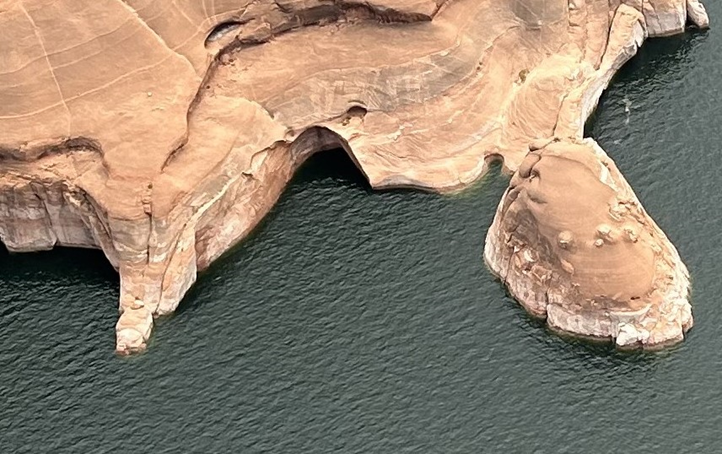
The Double Arch, also known as the “Toilet Bowl” or “Hole in the Roof,” was one of the tallest and second-longest arches in Arches National Park, standing at an impressive 112 feet tall and stretching 144 feet across. Located in the heart of The Windows Section, this arch was a must-see for park visitors, with a gently sloping trail leading hikers to its base. The arch was a testament to the power of erosion and geological forces that shaped the landscape over millions of years.
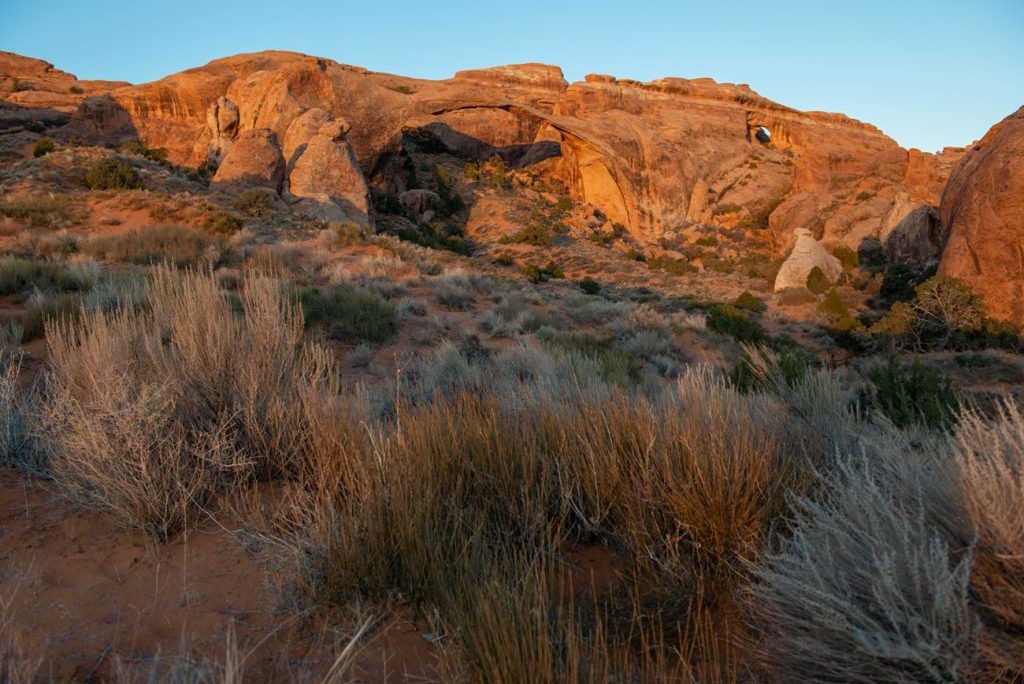
Formed from 190 million-year-old Navajo sandstone during the late Triassic to early Jurassic periods, Double Arch was the result of centuries of erosion by wind, water, and other natural forces. However, the same forces that created this majestic structure also contributed to its ultimate collapse. Changing water levels in Lake Powell and the relentless erosion from wave action are suspected to have played a significant role in the arch’s demise. This collapse serves as a stark reminder of the impermanence of even the most seemingly indestructible natural wonders.
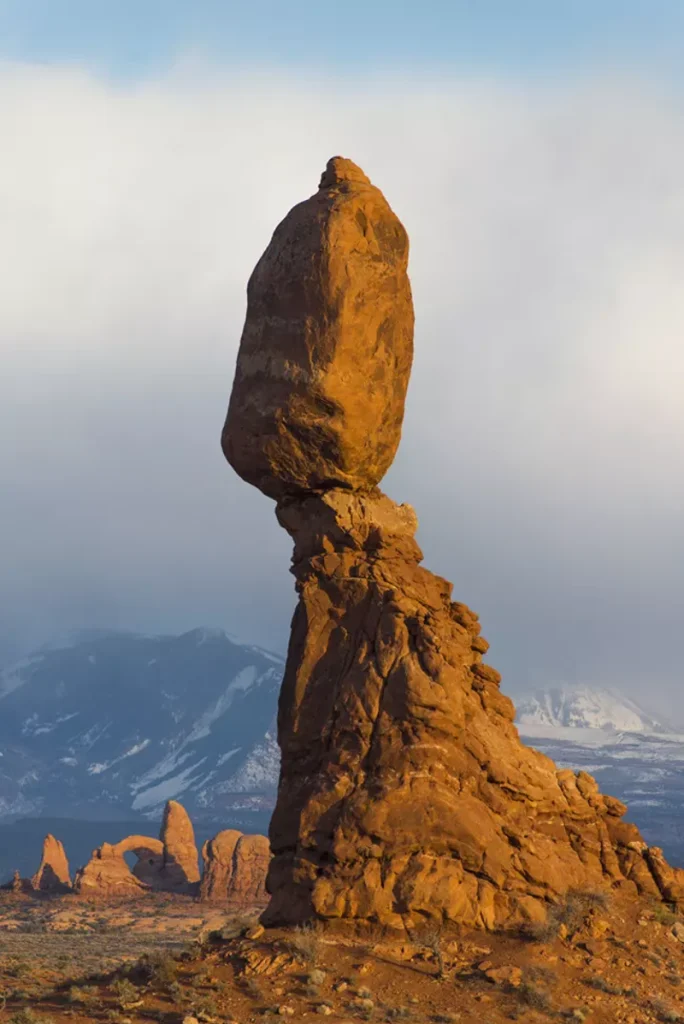
The loss of Double Arch is not an isolated incident. Arches National Park is home to over 2,000 documented arches, the highest concentration of natural stone arches in the world. These arches, ranging from small cracks to spans greater than 300 feet, are all subject to the same forces that claimed Double Arch. The story of these arches began roughly 65 million years ago when the area was a dry seabed, and the forces of erosion have been shaping and reshaping the landscape ever since.
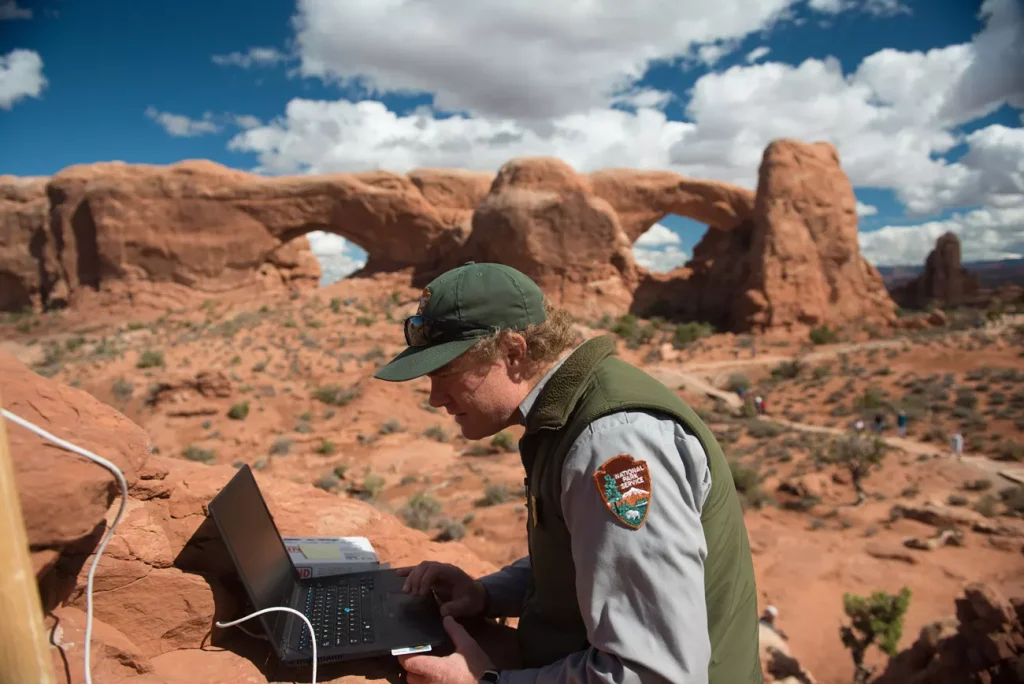
The formation of these arches is a delicate process, requiring just the right combination of geological conditions, including the type of sandstone, the presence of fractures, and the amount of precipitation. However, the same factors that contribute to their formation also lead to their eventual collapse.

Rainwater, which seeps into the porous sandstone and freezes in the winter, can cause the rock to crack and break apart. Over time, these cracks widen, and arches like Double Arch are created—only to be eventually destroyed by the same forces. As Ocean water and surface waters increase in temperature due to anthropogenic causes the rate of erosion can increase.
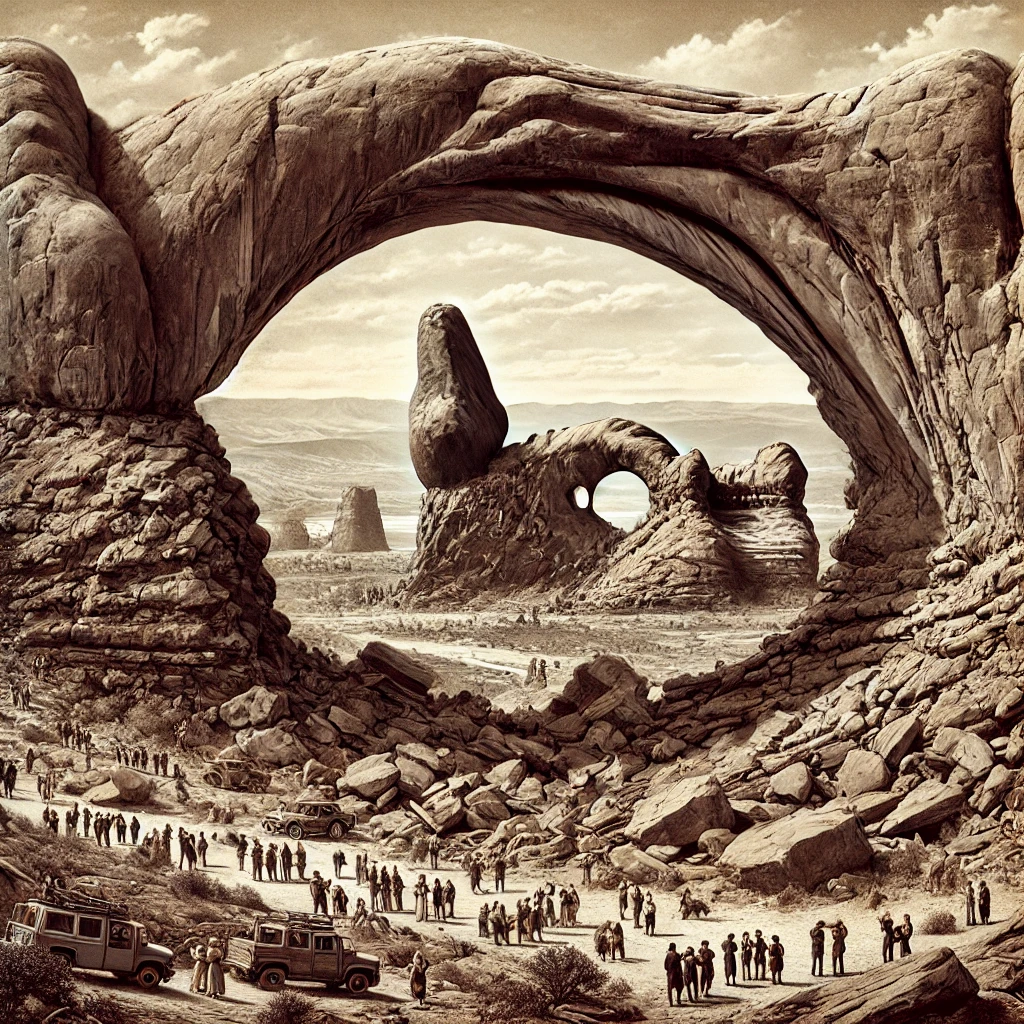
The collapse of Double Arch is a significant loss, not only for the natural beauty of Arches National Park but also for the visitors who have marveled at its grandeur. The arch was more than just a rock formation; it was a symbol of the power and beauty of nature, a place where people could connect with the natural world in a profound way. Its collapse is a reminder of the fragility of these natural wonders and the importance of preserving them for future generations.
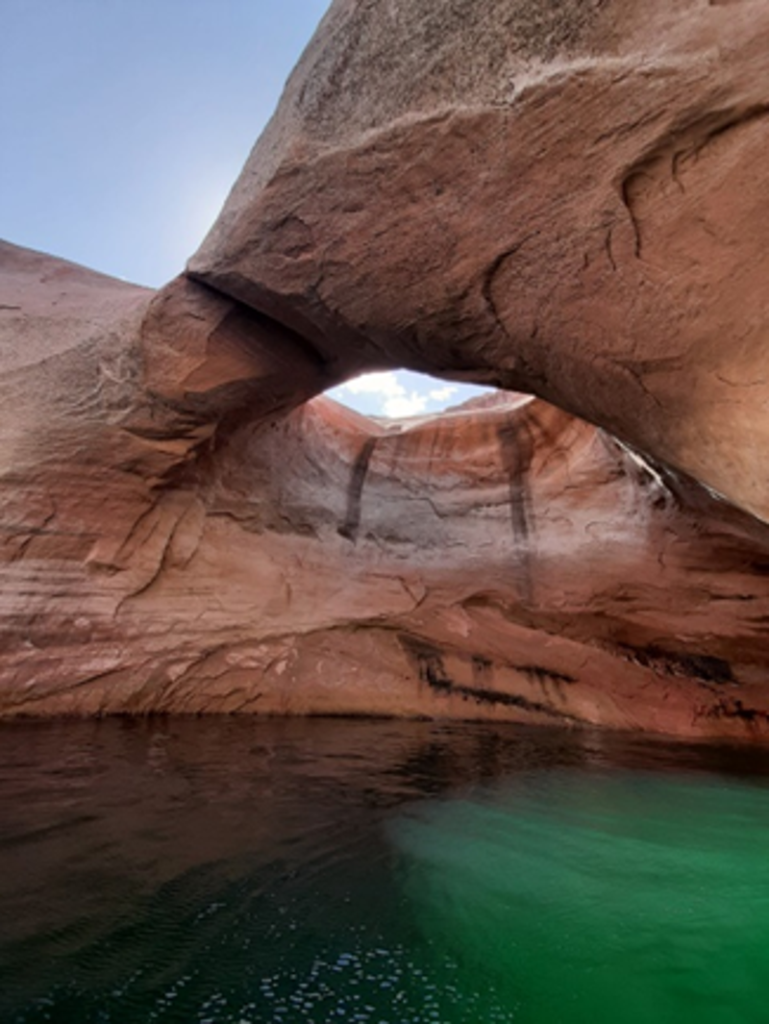
As climate change continues to alter weather patterns and increase the frequency of extreme weather events, the future of other natural wonders in Arches National Park and beyond remains uncertain.

The collapse of Double Arch is a wake-up call, highlighting the urgent need to address climate change and protect these irreplaceable natural treasures before it’s too late. While some arches may stand the test of time, others will inevitably fall, leaving us with the knowledge that the landscape we see today is constantly evolving—and disappearing.

In the end, the collapse of Double Arch is not just a loss for Utah or the United States; it is a loss for the world. It is a reminder that the natural world is fragile and that our actions—or inactions—have far-reaching consequences. As we move forward, let us take the lessons of Double Arch to heart and work together to protect the natural wonders that remain. After all, these landscapes are not just ours to enjoy—they are our responsibility to preserve.

